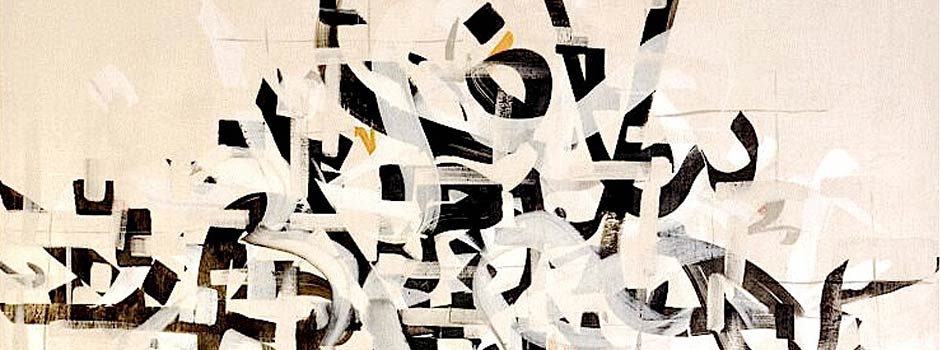
An Interview with Iraqi- British artist Sabah Arbilli Exploring the Shapes and Curves of Arabic Letters
Nov 18, 2013 Interview

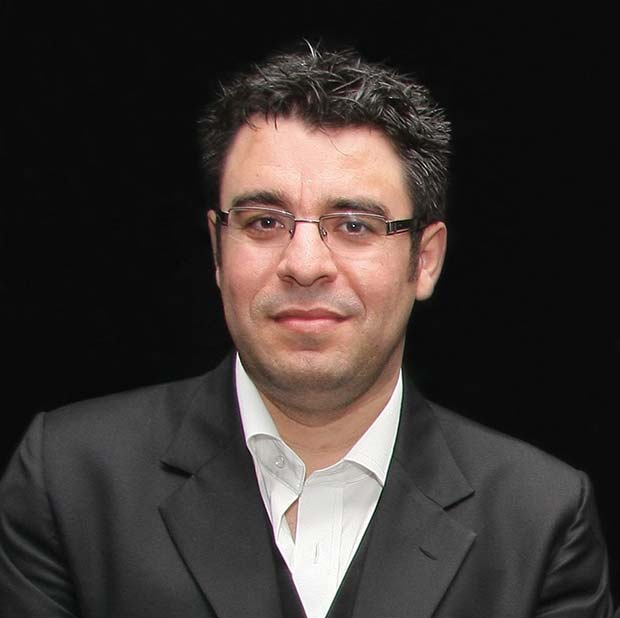 Sabah Arbilli (born 1977), an Iraqi- British artist / Courtesy of the Artist
Sabah Arbilli (born 1977), an Iraqi- British artist / Courtesy of the Artist
At a very young age my teacher pointed out my natural ability to write and draw to a high level. This later developed into a passion of enjoying writing in a beautiful way. My upbringing in Iraq has also vastly contributed to the inspiration of the cultural background I grew up in. The situation in Iraq had become turmoil and with the passion inside me I wanted to portray positivism and combat negativity through the words which echoed around me. I saw the richness of my country which was adorned by beauty and these were the memories I wished to portray though my art works.
The awards started when I was given an opportunity to take part in 1997 in an International art competition in Istanbul. This had become a turning point in my life; I won the second prize at the age of 19. This was overwhelming and gave me an insight into how this could lead to art as a career rather than just a passion. From there on I decided to work harder on my artworks and to participate in other competitions.
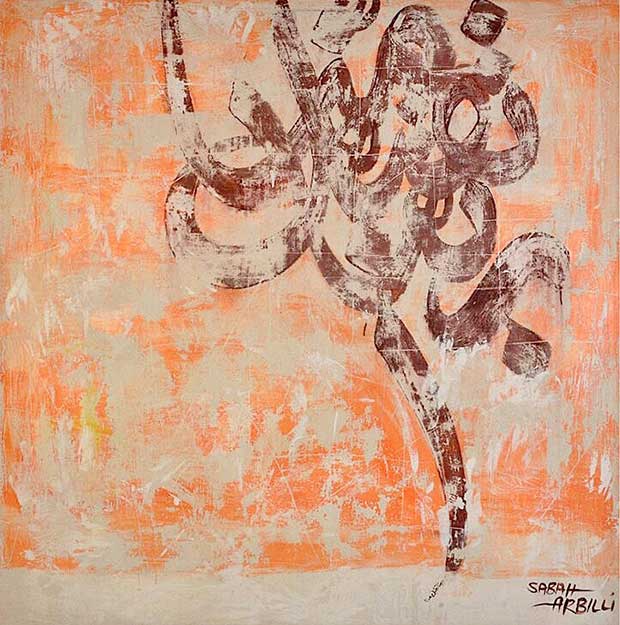 Sabah Arbilli / Aim, mixed media, 140x140 cm, 2013 / Courtesy of the Artist
Sabah Arbilli / Aim, mixed media, 140x140 cm, 2013 / Courtesy of the Artist
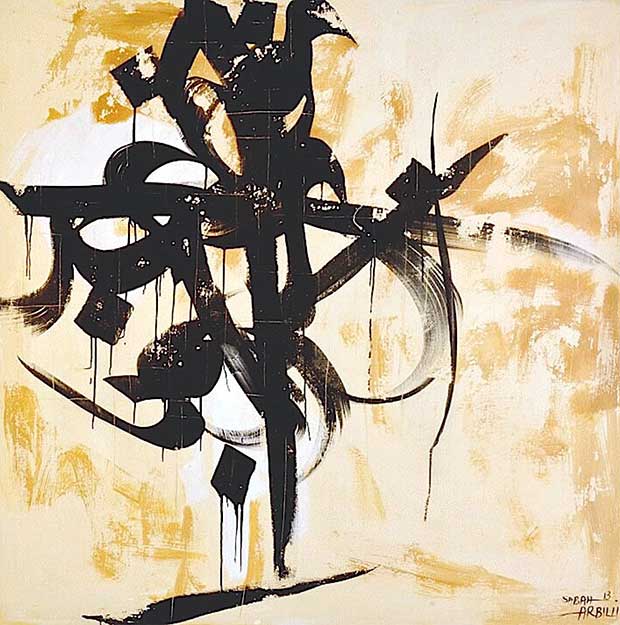 Sabah Arbilli / Bleed, mixed media, 140x140 cm, 2013 / Courtesy of the Artist
Sabah Arbilli / Bleed, mixed media, 140x140 cm, 2013 / Courtesy of the Artist
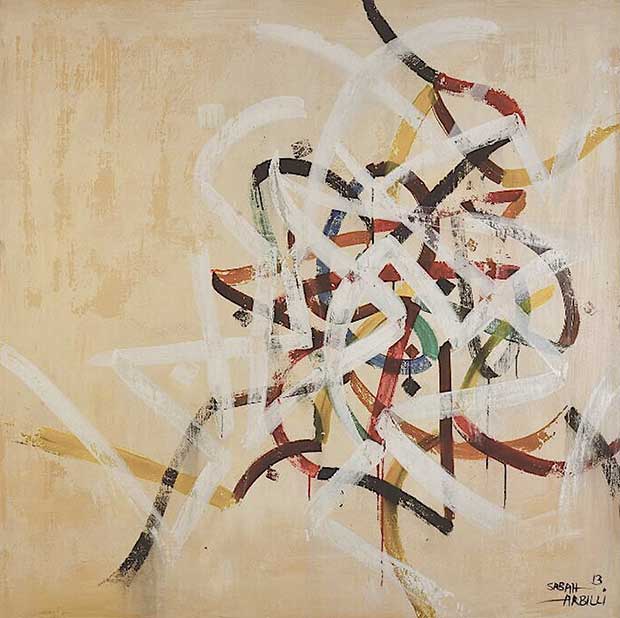 Sabah Arbilli / Connection, mixed media, 140x140 cm, 2013 / Courtesy of the Artist
Sabah Arbilli / Connection, mixed media, 140x140 cm, 2013 / Courtesy of the Artist
I am at a stage now where I have mastered the rules of calligraphy throughout the years. I have explored various styles and techniques of calligraphy and my new works are showing my freedom of expression and my own style.
I see shape, form, curves and edges in Arabic letters and all these factors give me a total attachment to the beauty of Islamic art in general and Arabic calligraphy in particular. I don't see myself as a conventional calligrapher because studying engineering gave me a wider vision of the dynamics in understanding the space around me and to what extended I can be flexible with my designs.
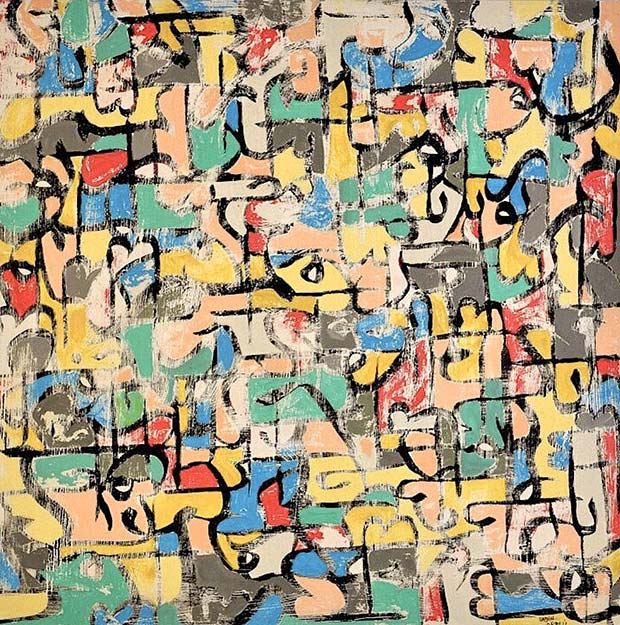 Sabah Arbilli / Dream, mixed media, 140x140 cm, 2013 / Courtesy of the Artist
Sabah Arbilli / Dream, mixed media, 140x140 cm, 2013 / Courtesy of the Artist
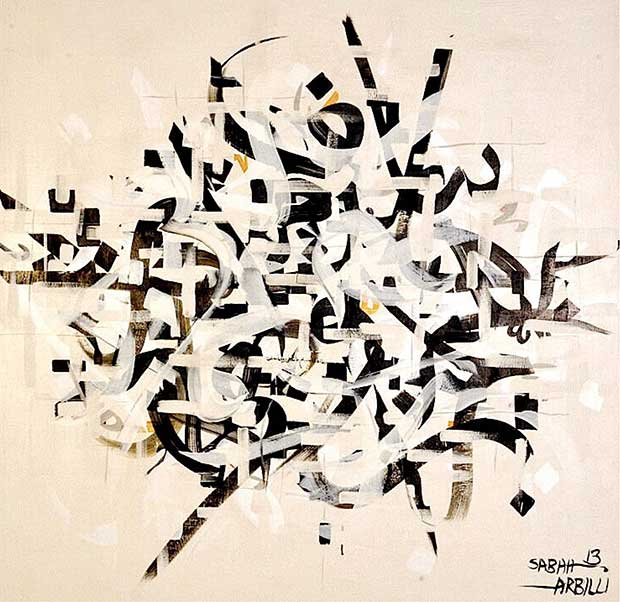 Sabah Arbilli / Element, mixed media, 140x140 cm, 2013 / Courtesy of the Artist
Sabah Arbilli / Element, mixed media, 140x140 cm, 2013 / Courtesy of the Artist
The titles of the mentioned art works have been inspired with remnants of my past. I would shut my eyes to see and capture the past moment, like a flashback. It is all about storytelling and revisiting the past.
 Sabah Arbilli / Path, mixed media, 140x140 cm, 2013 / Courtesy of the Artist
Sabah Arbilli / Path, mixed media, 140x140 cm, 2013 / Courtesy of the Artist
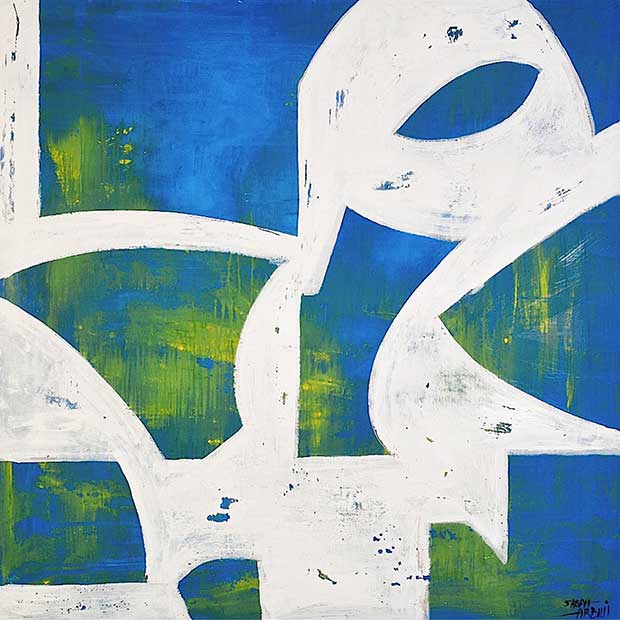 Sabah Arbilli / Hope, mixed media, 140x140 cm, 2013 / Courtesy of the Artist
Sabah Arbilli / Hope, mixed media, 140x140 cm, 2013 / Courtesy of the Artist
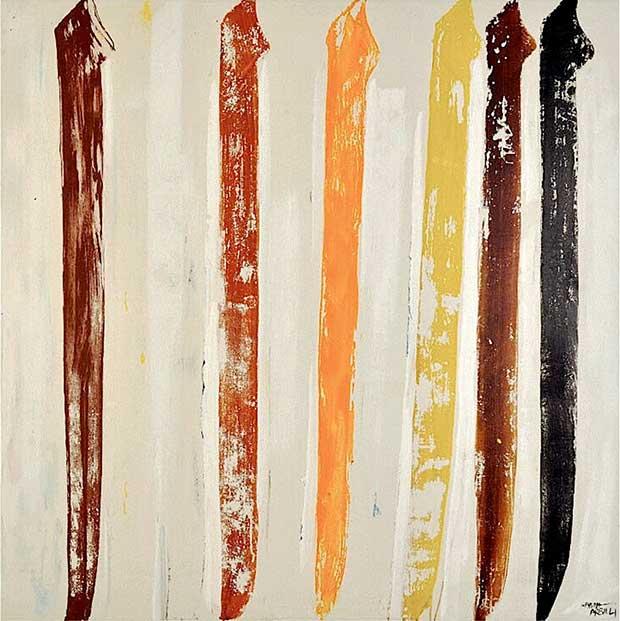 Sabah Arbilli / Protest, mixed media, 140x140 cm, 2013 / Courtesy of the Artist
Sabah Arbilli / Protest, mixed media, 140x140 cm, 2013 / Courtesy of the Artist
The colours in the new collection mostly reflect the meaning of the text the way I visualize it. From the text I express feelings and mood by using the colours and strokes in the calligraphic letters.
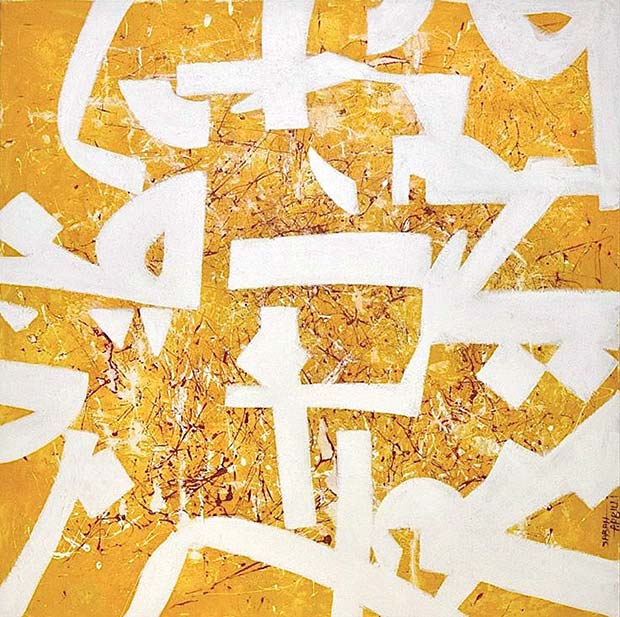 Sabah Arbilli / Light, mixed media, 140x140 cm, 2013 / Courtesy of the Artist
Sabah Arbilli / Light, mixed media, 140x140 cm, 2013 / Courtesy of the Artist
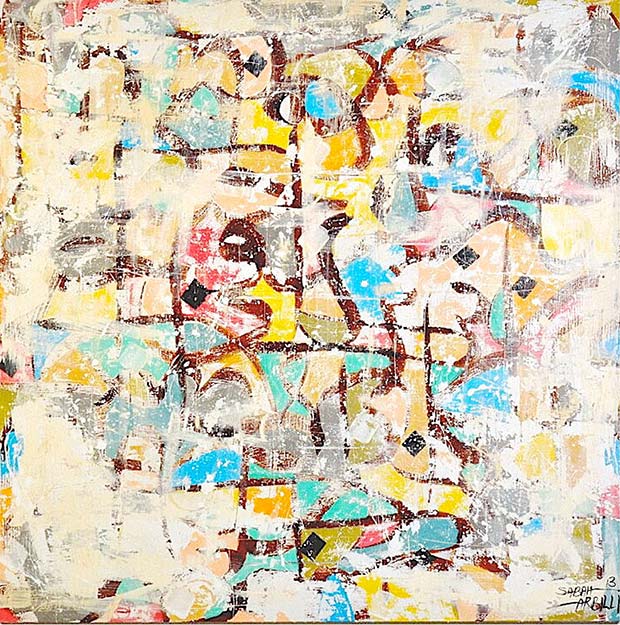 Sabah Arbilli / Vanish, mixed media, 140x140 cm, 2013 / Courtesy of the Artist
Sabah Arbilli / Vanish, mixed media, 140x140 cm, 2013 / Courtesy of the Artist
I always wanted to have a fresh approach to what I am doing. In my sculptures I wanted to create curiosity by creating excitement. This leads to presenting another dimension for the audience to experience, beyond the form of calligraphy.
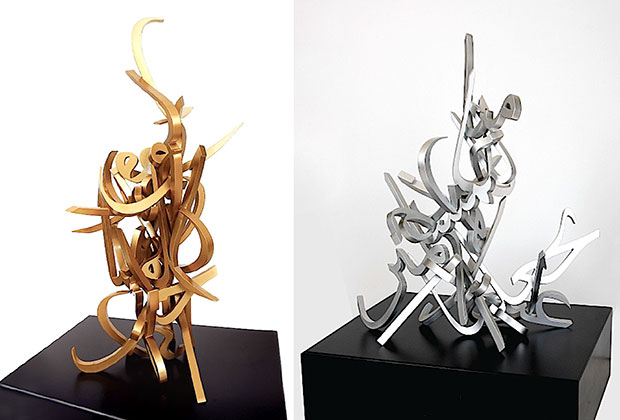 Sabah Arbilli / Sculptures, mixed media, 120x120 cm, 2013 / Courtesy of the Artist
Sabah Arbilli / Sculptures, mixed media, 120x120 cm, 2013 / Courtesy of the Artist
Art is a part of our daily life and the best way to absorb the reality is by capturing the moment of transition through a deep thought. When I visited my homeland I realized how destructed the country was. The bright colours and harmony between people started to fade and the voice of violence and disturbance took over, my childhood thought started to disappear. The present quickly became the past and a faded memory.
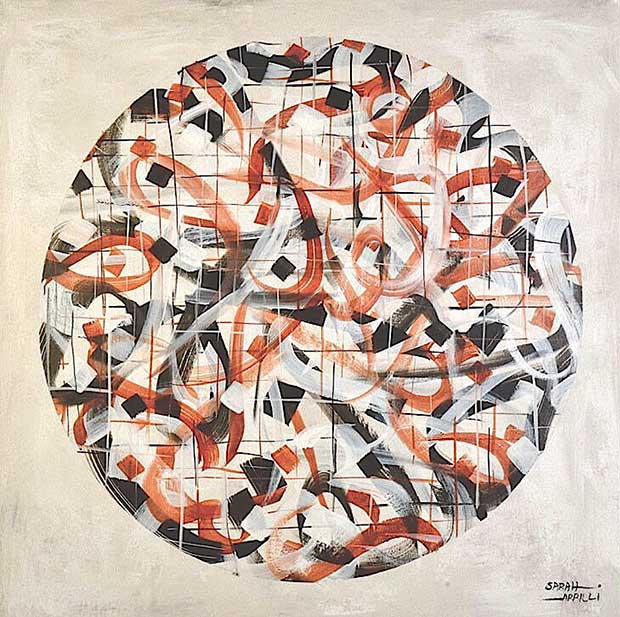 Sabah Arbilli / Protest, mixed media, 140x140 cm, 2013 / Courtesy of the Artist
Sabah Arbilli / Protest, mixed media, 140x140 cm, 2013 / Courtesy of the Artist
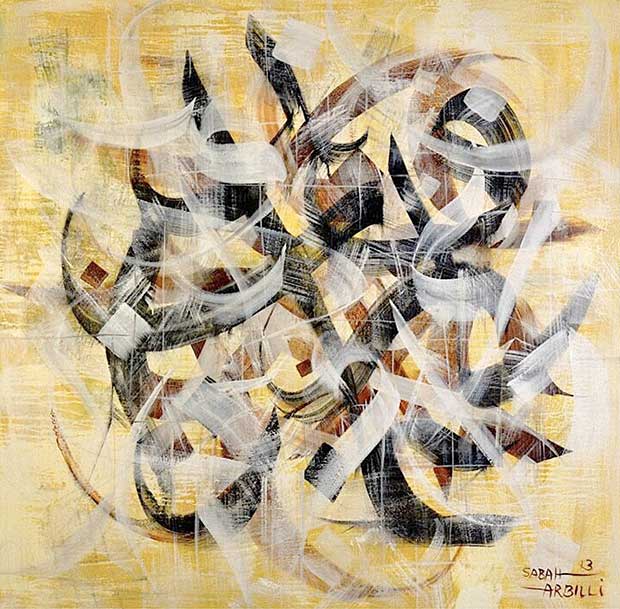 Sabah Arbilli / Untitled, mixed media, 140x140 cm, 2013 / Courtesy of the Artist
Sabah Arbilli / Untitled, mixed media, 140x140 cm, 2013 / Courtesy of the Artist
When I settled in UK, I studied art at the Prince's School of Traditional Arts. This gave me much broader knowledge to advance and get to know a lot of masters. Visiting the museums gave me a big boost to go further in to it. Despite starting as a traditional artist I was always struck by the beauty of contemporary art and in my opinion both are essential for the inspiration. The artists such as Jackson Pollock, Andy Warhol and many more gave me a lot of confidence to think outside of the box.
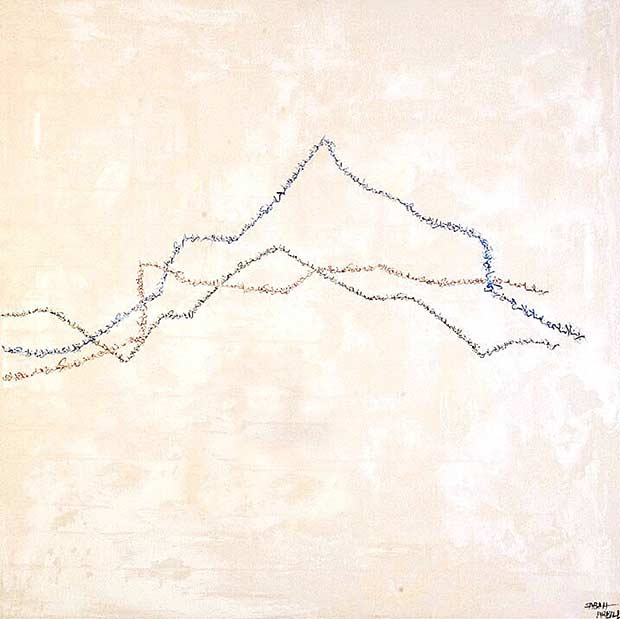 Sabah Arbilli / Eco, mixed media, 140x140 cm, 2013 / Courtesy of the Artist
Sabah Arbilli / Eco, mixed media, 140x140 cm, 2013 / Courtesy of the Artist
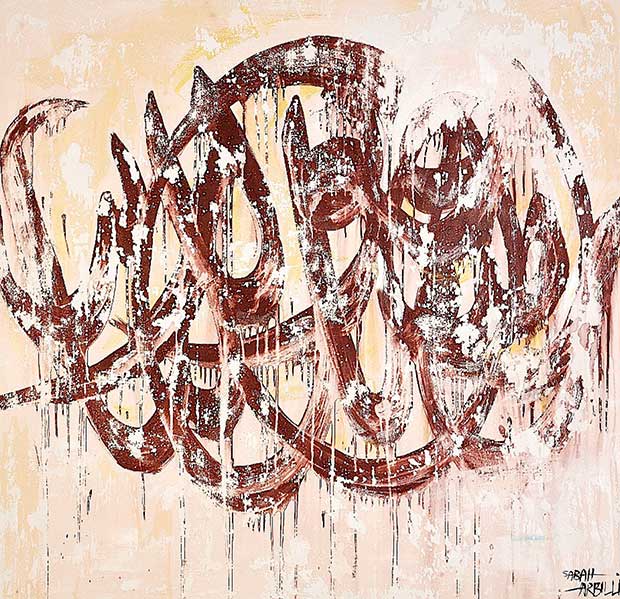 Sabah Arbilli / Untitled, mixed media, 140x140 cm, 2013 / Courtesy of the Artist
Sabah Arbilli / Untitled, mixed media, 140x140 cm, 2013 / Courtesy of the Artist
I love the scene of Islamic art in London; there are a lot of Islamic art lovers here. Actually most of my collectors are from London, more than from anywhere else.
I will start by participating in the Islamic Art Forum in Kuwait. I am planning to have an exhibition in Dubai, a solo exhibition in Qatar, the Ramadan exhibition and tour in UK and finally creating two big sculptures as a public art.
Comments
Add a comment